Links to most of the items you’ll see in this video can be found on my Frequently Asked Questions page, under “Knitting Supplies”.
Baby Shower Countdown

How much time do you have to knit before the shower?
Baby Shower Countdown is a collection of baby knits, suitable for gift-giving, arranged by the amount of time you have to knit before the baby shower.
Whether you’re a beginner or advanced knitter, you’ll find that these patterns are knitter-friendly and fun to make. Additionally, each pattern includes links to free instructional videos to guide you through the trickier parts. The only skills required for this collection are casting-on, knitting, purling, and binding-off.
Each pattern is designed using affordable, machine-washable yarns. Since baby knits require so little yardage, it’s likely that you already have enough yarn in your stash to knit many of the patterns.
These 10 patterns + links to 39 instructional videos are available three ways:
PDF collection (suitable for printing), $12.00 US ![]()
Amazon eBook digital download (suitable for devices that use Kindle; including iPad, iPhone, Android, and Blackberry): $9.99 US 
Patterns + links to instructional videos are also available for individual purchase and download, listed below.
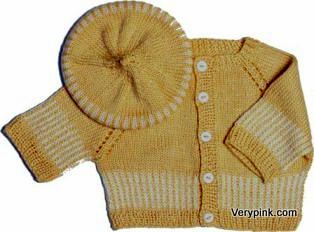 |
Striped Cardi and Matching Beanie or Beret
Sizes: 3 mo, 6 mo, 12 mo |
 |
Sleep Sack
Sizes: 0-3 mo, 6 mo |
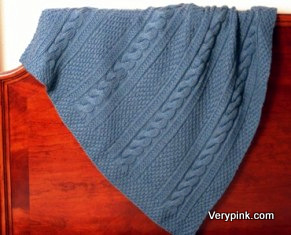 |
Cabled Baby Afghan
Size: 36″ x 36″ |
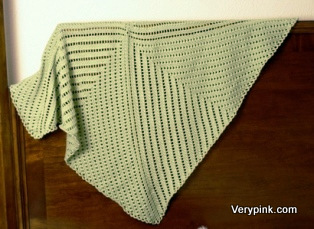 |
Eyelet Baby Blanket
Size: 38″ x 38″ |
 |
Quick-Knit Hoodie
Sizes: 3 mo, 6 mo, 12 mo |
 |
Baby Athletic Socks
Sizes: Infant/Child shoe sizes 2, 3, 4, 5, 6 |
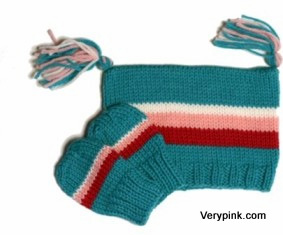 |
Tassel Hat and Matching Thumb-less Mitts
Sizes: Preemie, 0-6 mo, 6-18 mo |
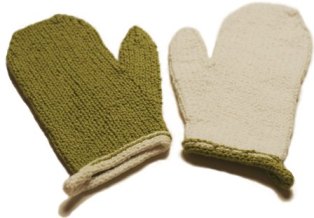 |
Cotton Wash Mitts
Size: adult |
Help for Tight Knitters
Blooper Video 1
The whole time we’re shooting, three dogs are wanting to go outside, then back in, then out again, etc. Having the backdoor open that often means that there are often unwelcome guests in the shot. I really try not to be distracted by them, but…
Mattress Stitch
Weaving in Ends
Good Taste
It’s finally chilly enough in Austin to bring out the wool again, which means that Ike has been reacquainted with his favorite thing in the world.
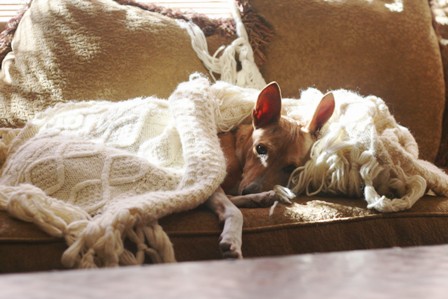
No polar fleece, machine-washable dog blankets for this gentleman. This is a full-on Aran fisherman-style afghan, knit by yours truly. Ike gets seriously excited whenever I pull it out of the trunk, and he makes a beeline for it. Everyone in the house knows that this is HIS blanket, even though that was not my intention when I spent dozens of hours knitting it.
What can I say. He’s got good taste. And he’s willing to share a corner of it if I sit right next to him.
Tunisian Crochet
Tunisian crochet is an awesome technique that my family has used for generations, but I have found that there is little known about it with fiber people nowadays. In my family, we have always called it “the afghan stitch”. It works up like a cross between knitting and crochet. Tunisian crochet hooks are long (10” or more), and stitches are held on the hook much like a knitting needle. To compare it further to knitting, it is sort of like picking up and binding-off stitches every row.
I created this video to help with a pattern I released earlier this year – Lone Star Baby Crib Blanket.
Blooper
I’m lucky to have Parker editing my videos, because he makes it look as if I never stumble over words, or run my tongue over my front teeth right before I start talking. In this video, he exposes me.
In my defense, YOU try saying “wash and block your swatch, of course”.
